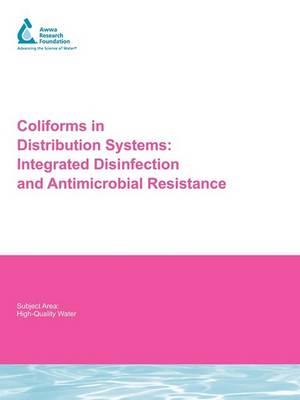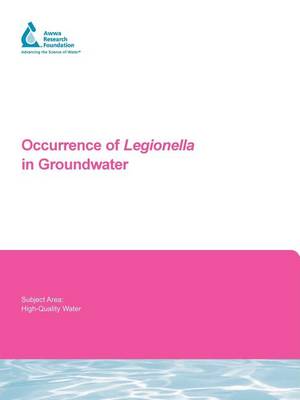Water Research Foundation Report
2 total works
Coliforms in Distribution Systems
by G. Gagnon, H. Murphy, J Rand, S. Payne, S. Springthorpe, F. Matias, R. Nokbeh, and S. Sattar
Published 1 November 2007
More than 20 years ago, researchers documented increased levels of antibiotic resistant bacteria as a result of water treatment processes including disinfection. Under controlled conditions, sublethal exposures of bacteria to disinfectants can result in altered and often reduced susceptibility to other antimicrobials, including antibiotics. In addition to disinfectants and their by-products, bacteria in drinking water are subject to several, almost continuous, ecological stressors that include nutrient depletion/starvation, metals from pipe corrosion, and microbial competition/predation.
The major objective of this project was to understand the potential mechanisms of anti-microbial resistance of E. coli and opportunistic pathogens under disinfection conditions that are relevant to drinking water distribution systems. The research was conducted under controlled laboratory conditions and at the field level to provide closer approximations to the microbiological reactions in distributions systems. The project involved molecular techniques to understand genetic changes in microbial population in response to different disinfectant conditions. The researchers recommend implementing UV light as a primary disinfectant with chlorine-based secondary disinfection to enhance removal of heterotrophic plate count (HPC) bacteria due to synergistic effects and the previously established added benefit of a wider range of bacteria and protozoa inactivated (i.e., chlorine-resistant pathogens such as Cryptosporidium parvum).
Utilities will benefit from high reductions in HPC bacteria and lower formation of biofilm in the distribution systems. There would also be potential for lower contact times (CTs) required for chlorine-based disinfectants with UV light pre-treatment to achieve higher reductions than chemical disinfectant alone at high CT. However, utilities would not be able to depend on UV pre-treatment to lower required dosages of chlorine-based disinfectant to maintain minimum residual concentrations. The researchers also recommend that UV light not be used as the primary and only disinfection because bacteria counts actually increased with UV-treated water when no residual protection was supplied.
The major objective of this project was to understand the potential mechanisms of anti-microbial resistance of E. coli and opportunistic pathogens under disinfection conditions that are relevant to drinking water distribution systems. The research was conducted under controlled laboratory conditions and at the field level to provide closer approximations to the microbiological reactions in distributions systems. The project involved molecular techniques to understand genetic changes in microbial population in response to different disinfectant conditions. The researchers recommend implementing UV light as a primary disinfectant with chlorine-based secondary disinfection to enhance removal of heterotrophic plate count (HPC) bacteria due to synergistic effects and the previously established added benefit of a wider range of bacteria and protozoa inactivated (i.e., chlorine-resistant pathogens such as Cryptosporidium parvum).
Utilities will benefit from high reductions in HPC bacteria and lower formation of biofilm in the distribution systems. There would also be potential for lower contact times (CTs) required for chlorine-based disinfectants with UV light pre-treatment to achieve higher reductions than chemical disinfectant alone at high CT. However, utilities would not be able to depend on UV pre-treatment to lower required dosages of chlorine-based disinfectant to maintain minimum residual concentrations. The researchers also recommend that UV light not be used as the primary and only disinfection because bacteria counts actually increased with UV-treated water when no residual protection was supplied.
Occurrence of Legionella in Groundwater
by S. Riffard, S. Springthorpe, L. Filion, S. Sutter, T Brooks, R. Osicki, M. Lee, and D. Abrial
Published 31 August 2004
Legionella spp. in groundwater sources have been reported to be the cause of waterborne infections, specifically Legionnaire?s Disease and Pontiac Fever. Legionellae are known to be ubiquitous in surface waters, but much less is known about their occurrence in groundwater, which is the source of potable water for millions in North America. Federal drinking water regulations may not eliminate the threat of Legionella exposure from groundwater-derived drinking water. The primary reason is because current regulations focus on fecal contamination. Presently, there is no evidence that demonstrates an association between fecal contamination and Legionella. This was a two-phased study. A literature review of groundwater temperatures in the United States was conducted and two warm-water sites were selected to demonstrate that Legionellae could be isolated from environmental samples. Legionellae were detected by combining a quantitative culture method (considered the gold standard) with a qualitative semi-nested PCR assay. The use of immuno-magnetic separation (IMS) was also evaluated to selectively capture Legionellae from the samples. This is the first comprehensive study on the presence of Legionellae in groundwaters and its findings suggest that untreated well waters must be considered as potential sources of these opportunistic pathogens. Based on the level of contamination observed and the general assumption that all Legionella species should be considered pathogenic, we recommend that Legionella be considered for regulation in any future rules on groundwater quality. Originally published by AwwaRF for its subscribers in 2004. This publication can also be purchased and downloaded via Pay Per View on Water Intelligence Online - click on the Pay Per View icon below

